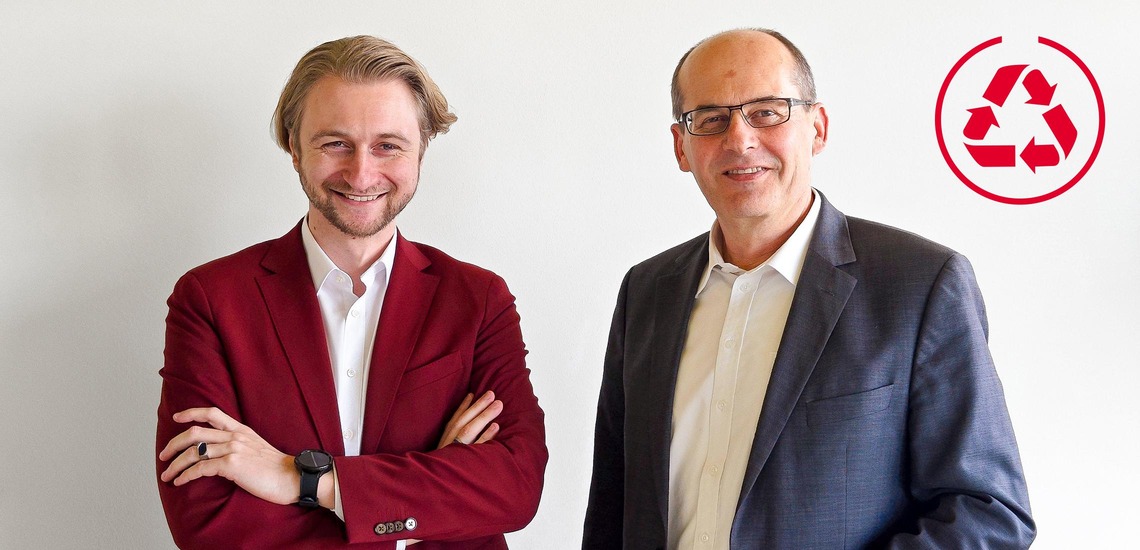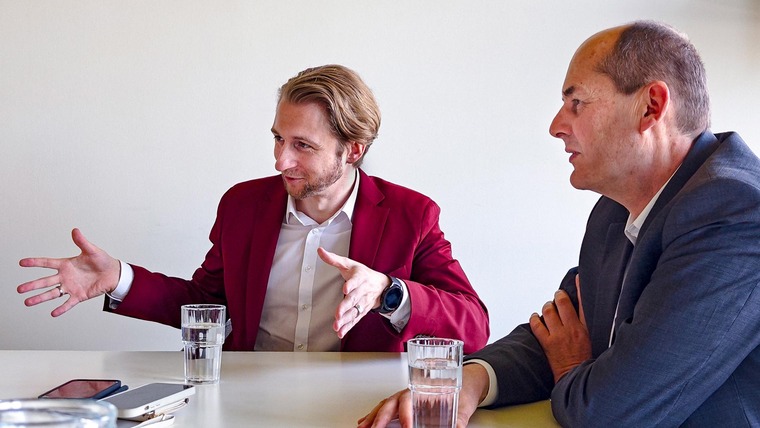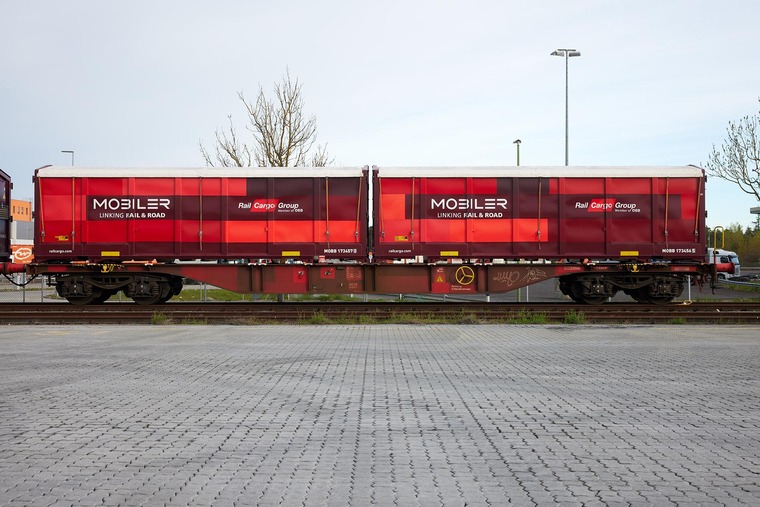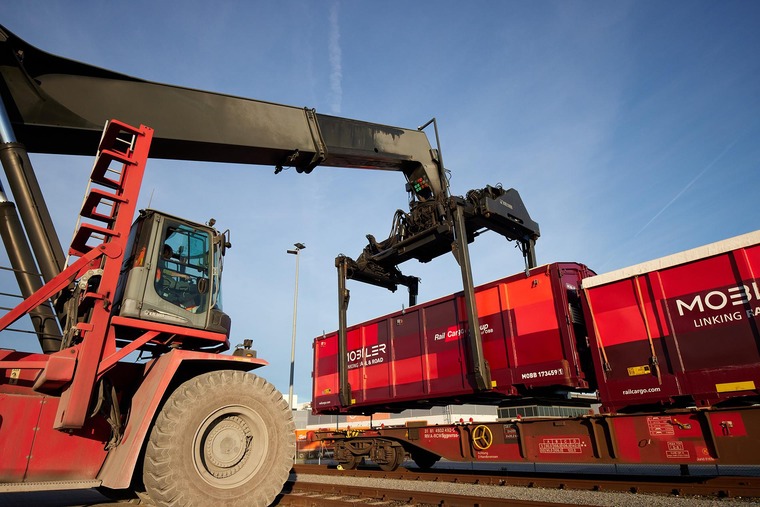What is special about the MOBILER?
Christopher: The MOBILER is actually a decentralised addition to our terminals and allows us to handle goods in “greenfield” regions, as our customers often have no rail connections. No additional equipment such as forklifts or cranes are required for transhipment, just the lorry driver, who can carry out the transhipment by remote control in seven minutes. But the real intelligence of the MOBILER is in the container, not the wagon, because it can be adapted to a wide variety of goods and waste types and therefore fulfils our requirements perfectly. We build our containers the way the customer needs them.
Thomas: Our aim is that, like the lorry, we don’t produce empty runs and find synergies. That’s not always easy in combination with waste. For example, we transport waste in one direction and building materials in the other.
What types of waste do you transport, and which industries do you deal with?
Christopher: We cover a broad spectrum and transport both unprocessed waste, for example bulky waste and salt slag, and processed waste, for example substitute fuels for the cement industry. There are different things to consider depending on the type of waste. Salt slag, for example, is a waste product from aluminium production. As salt and products containing salt are not particularly compatible with steel, we equip our containers with a special inner coating that originally comes from offshore plants, such as those found in the sea. This makes the containers more durable.
Our biggest Key Accounts are customers who are concerned with the thermal utilisation of waste. The waste is used to generate electricity, district heating and heating energy.
Thomas: Waste is a huge source of energy. The economy needs it. And the cement industry in particular needs it, because they need a lot of heat in their kilns. That’s why the cement industry is also a very big consumer of processed waste. The waste is shredded by sieving and sorting plants and parts are removed that can be utilised in other ways, for example in thermal plants. These are the two options: either the waste is utilised thermally, or it is processed or recycled.
Are there any main routes that are particularly important or that are emerging in the future?
Christopher: We don't have a classic route mentality, but certain routes result from the system. For example, waste is transported from Italy to Austria, Germany, and Sweden for thermal utilisation in Scandinavia. In Austria, the main route runs from west to east and south to north. For Linz AG, for example, we transport municipal waste from Tyrol to Upper Austria.







